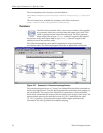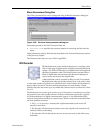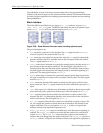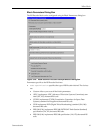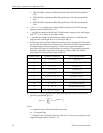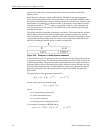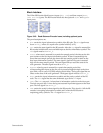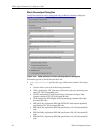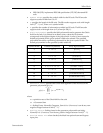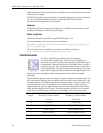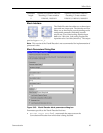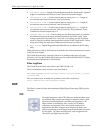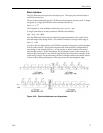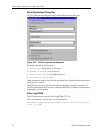
Communication 65
Xilinx Blocks
Block Interface
The Xilinx RS Encoder block has two inputs (din, rst) and three output (dout,
info and rfd) ports. The RS Encoder block also has optional start and bypass
input ports.
Figure 3-43: Reed-Solomon Encoder icons, including optional ports
The port descriptions are:
• din: carries the input information symbols of the RS code. The din signal must
be an UFixS_0 where S is equal to the symbol width (3 to 12).
• rst: carries the reset signal for the RS encoder. After the rst signal is asserted the
RS encoder initializes the next available input as the first information symbol. The
rst signal must be a UFix1_0.
• start: when start is asserted for a particular sample period, the data on the din
port is taken as the first input information symbol. If start is asserted high for
more than one sample period, the data at the last sample period is taken as the
first input information symbol. The start signal is ignored if bypass is asserted
high for the same sample period. The start signal always resets the state of the
code generator. The start signal must be a UFix1_0.
• bypass: when bypass is asserted for a particular sample period, the
corresponding data input on the din port is passed straight through to the dout
port with a 4 (6 in case of CCSDS) sample period delay. The bypass signal has no
effect on the state of the code generator. The bypass signal must be a UFix1_0.
• dout: carries the input information symbols and the parity symbols of the RS
code. The dout signal has the same arithmetic type as the din input.
• info: The info output is 1 when there is information symbols on the dout port.
The info output is also 1 when the bypass asserted input data appears at the dout
port. The info signal is a UFix1_0.
• rfd: carries the ready for data signal for the RS encoder. This signal is 1 till the RS
encoder is accepting information symbols and 0 when the RS encoder is
outputting parity symbols. The rfd signal is a UFix1_0.




